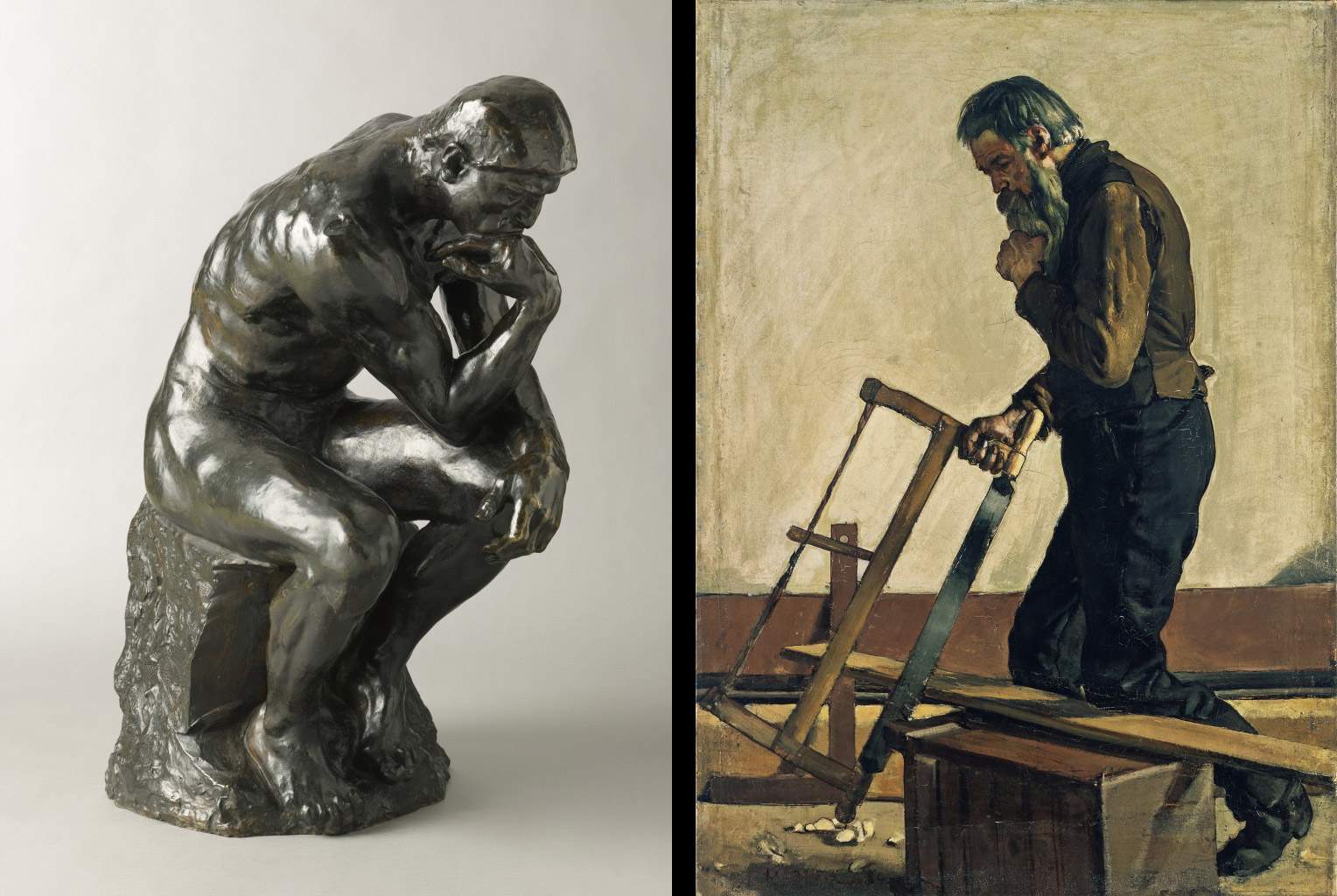Yet another unconventional exhibition at Geneva ’s Musée d’Art et d’Histoire (MAH), which this year has begun a process of radically shifting exhibition paradigms with a new series of exhibitions, for which a new stage is now starting. The exhibition this time is titled Draw Your Own Conclusion: guest curator Jean-Hubert Martin, from Jan. 28 to June 19, 2022, will organize an atypical dialogue among 750 works and artifacts ranging from the 18th-century guillotine to stage costumes designed by Matisse to historical paintings by leading Swiss artists including Jacques-Laurent Agasse, Ferdinand Holder, and Félix Vallotton.
For its second major exhibition in the new program, the MAH thus renews its plan to oppose traditional exhibition modes that emphasize chronology and educational learning experiences. Instead, the exhibition will prioritize a sense of play and curiosity, orchestrating unlikely dialogues, such as that between Naqada II pottery from Ancient Egypt, modern Japanese Kabuki prints, and 19th-century Swiss painting.
Since the second half of the nineteenth century, the organizers argue, techniques of museum conservation and display have become increasingly sophisticated, leading to remarkable advances but often neglecting the principles of discovery and play. Building on this observation, Martin spent nearly two years studying the MAH’s permanent collection to select objects based on analogical correspondences such as colors, shapes and proportions rather than pre-existing geographical and historical narratives. The resulting installation is, a note states, “a theater of unexpected encounters in which visitors are left to their own devices. As such, the exhibition celebrates the speculative nature of knowledge, rejecting the assumption that art is a code to be deciphered and, instead, encouraging instinctive interpretation as a way of understanding the world.”
Draw Your Own Conclusion is conceived as a series of analog sequences. On the ground floor, Swiss painter François Diday’s 1867 landscape Giessbach Falls, which features the scenic waterfalls of the same name, is in conversation with fellow Swiss artist Jacques-Laurent Agasse’s 1837 La Fontaine Personnifi&e acute;e, which depicts a fantastical nymph inspired by English Romanticism. Drawing on the myth of Venus’ birth, this pairing is complemented by Japanese Kabuki prints from the same period. Meanwhile, neighboring rooms highlight more recent and international artworks, including a large acrylic painting by Franco-Polish artist Roman Opalka from the One to Infinity series, a wool by Austrian artist Josef Hoffmann, and a 1920 stage costume designed by Henri Matisse for Igor Stravinsky’s ballet Le chant du rossignol.
Also on the ground floor, a series of works explore the broad theme of the human condition. These include an 1896 bronze cast of Auguste Rodin’s famous sculpture The Thinker, whose pose mirrors that of the protagonist of Ferdinand Hodler’s 1884 painting L’Ouvrier philosophe. From scenes of tender love to intense violence, other rooms revisit founding myths that still have relevance today. A 1914 oil painting by French-Swiss artist Félix Vallotton, titled Orphée dépecé par les Ménades, depicts the ancient Greek prophet mutilated by a group of maenads. Nearby, a 17th-century oil painting of similar composition by the Lombard school depicts the abduction of Zeus’ daughter Helen by Paris. Also, in tribute to the late Swiss artist Markus Raetz, who passed away last year, 15 of his works punctuate the exhibition. They include his early engravings from the 1960s, a print of a female nude made in collaboration with Swiss photographer Balthasar Burkhard, and a 1991 cast-iron sculpture made in homage to Joseph Beuys.
“Today, most museum exhibitions,” says Jean-Hubert Martin, “adhere to chronological exhibition methods, grouping works by movements, schools or historical moments. This systematic division too often limits the possibilities of resonance between artifacts from different cultures, whose encounters are judged ahistorical. Despite the challenges, museums should be places of unexpected encounters that enhance knowledge but also human sensibility and instinct.”
“Over the past four decades,” says Marc-Olivier Wahler, director of the MAH, “Jean-Hubert Martin has curated challenging seminal exhibitions at some of the world’s most influential institutions. As such, he is in a unique position to revisit the MAH’s permanent collection. Its commitment to disrupting traditional exhibition discourses contributes to the MAH’s ongoing transformation into a museum of the future, and we are excited to take this journey together. The MAH is a museum of heritage and collective memory, where visitors can encounter objects and stories that help them understand each other and the world around them. Through our collection, we want to tell engaging and surprising stories.”
For more information you can visit the MAH website.
Image: left, Auguste Rodin, The Thinker (original model 1880, cast in bronze 1896; 72 x 34 x 53 cm; Geneva, Musée d’Art et d’Histoire), photo F. Bevilacqua. Right: Ferdinand Hodler, L’Ouvrier philosophe (1884; oil on canvas, 72.2 x 51.6 cm; Geneva, Musée d’Art et d’Histoire), photo B. Jacot-Descombes
 |
| Geneva, Musée d'Art revisits its collection under the banner of unlikely dialogues |
Warning: the translation into English of the original Italian article was created using automatic tools. We undertake to review all articles, but we do not guarantee the total absence of inaccuracies in the translation due to the program. You can find the original by clicking on the ITA button. If you find any mistake,please contact us.